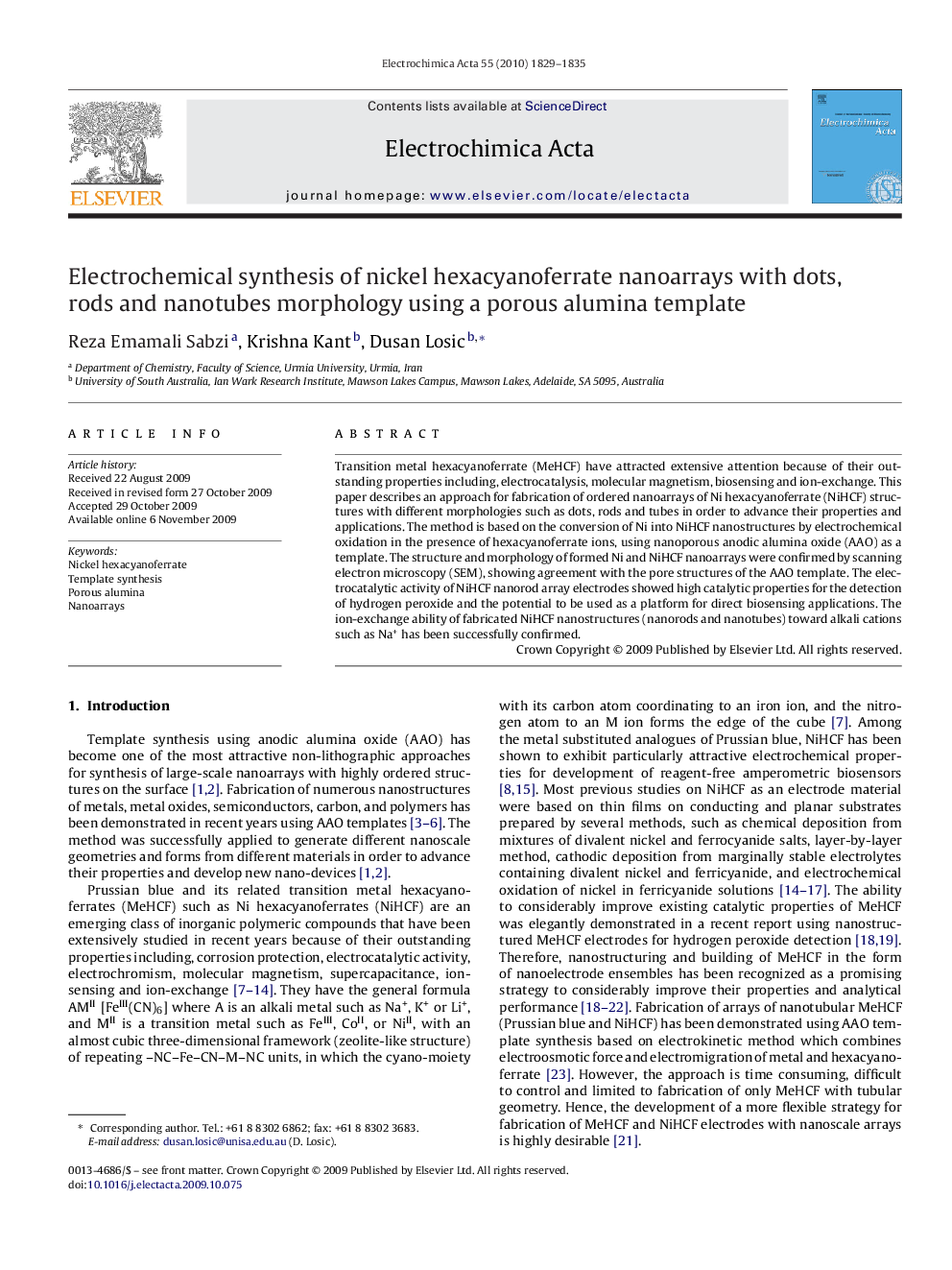| Article ID | Journal | Published Year | Pages | File Type |
|---|---|---|---|---|
| 192109 | Electrochimica Acta | 2010 | 7 Pages |
Transition metal hexacyanoferrate (MeHCF) have attracted extensive attention because of their outstanding properties including, electrocatalysis, molecular magnetism, biosensing and ion-exchange. This paper describes an approach for fabrication of ordered nanoarrays of Ni hexacyanoferrate (NiHCF) structures with different morphologies such as dots, rods and tubes in order to advance their properties and applications. The method is based on the conversion of Ni into NiHCF nanostructures by electrochemical oxidation in the presence of hexacyanoferrate ions, using nanoporous anodic alumina oxide (AAO) as a template. The structure and morphology of formed Ni and NiHCF nanoarrays were confirmed by scanning electron microscopy (SEM), showing agreement with the pore structures of the AAO template. The electrocatalytic activity of NiHCF nanorod array electrodes showed high catalytic properties for the detection of hydrogen peroxide and the potential to be used as a platform for direct biosensing applications. The ion-exchange ability of fabricated NiHCF nanostructures (nanorods and nanotubes) toward alkali cations such as Na+ has been successfully confirmed.
